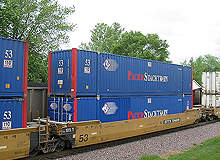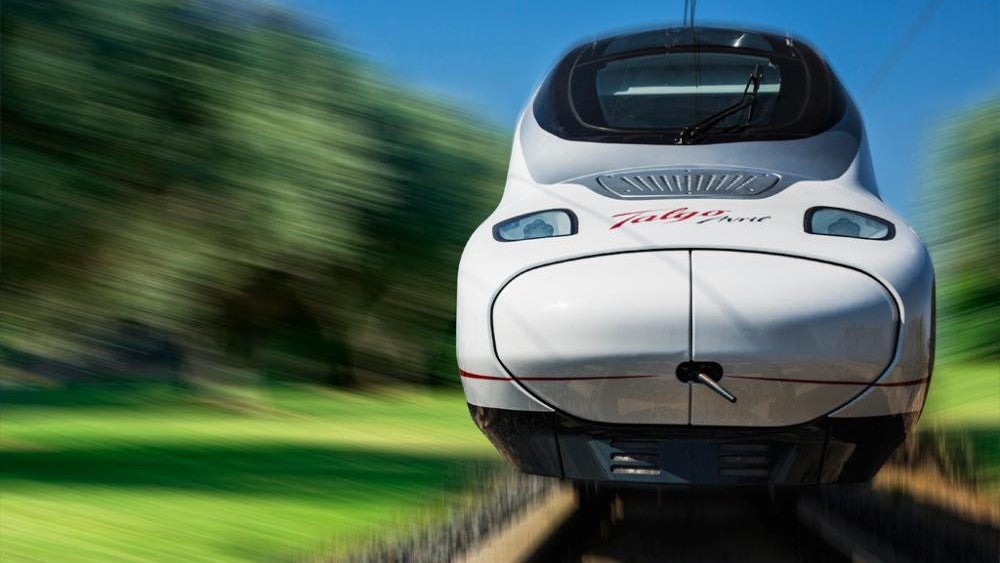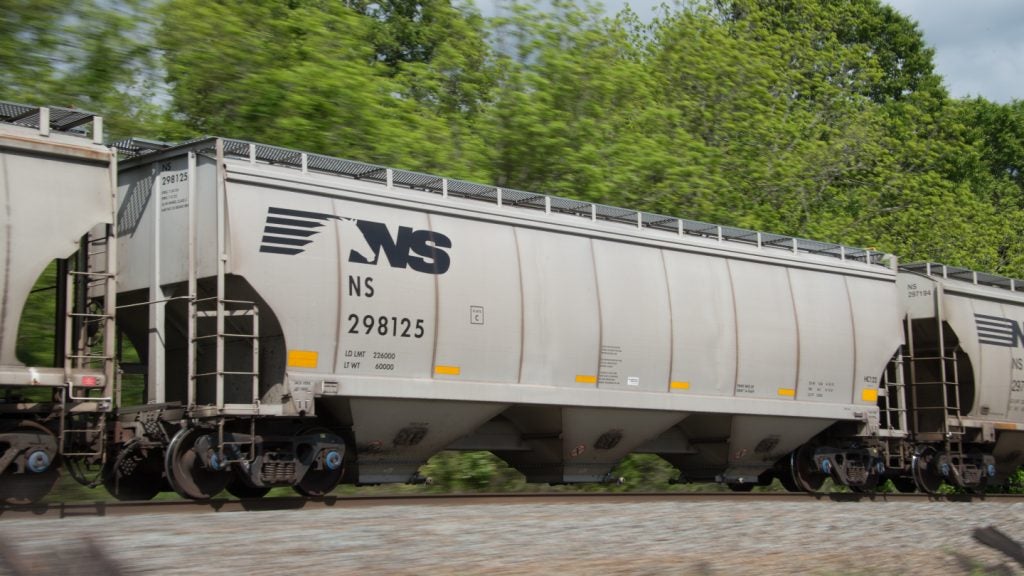
As the US Department of Transportation (DoT) predicts a huge surge in demand for freight haulage in the country, public-private partnerships are quickly being formed to cope with what has been labelled as the infrastructure crisis.
Billions of dollars are being invested to upgrade tracks and build new corridors to make way for cargo that is increasing as result of a rising population and the accumulating supply of commodities.
The latest report from the Association of American Railroads showed that the monthly rail carloads for November 2010 were up 4.5% compared to the same period last year, while intermodal traffic was up 11.3%.
AAR senior vice-president John Gray recently said in a statement: “November marks the 11th straight month in which rail volumes were higher than year-earlier levels. That hasn’t happened since January 2006.”
As with most industries, the global financial crisis pushed freight traffic down in 2009, but according to Gray, consumer confidence is growing, which will lead to the increase in consumer spending. And now, the DoT is suggesting that demand for freight transportation will increase by 92% by 2035 from 2002 levels.
See Also:
These figures seem to reflect a growing economy but, in order for the country to cope with the soaring levels of shipments, railroad companies must expect to bear the bulk of the load.
How well do you really know your competitors?
Access the most comprehensive Company Profiles on the market, powered by GlobalData. Save hours of research. Gain competitive edge.

Thank you!
Your download email will arrive shortly
Not ready to buy yet? Download a free sample
We are confident about the unique quality of our Company Profiles. However, we want you to make the most beneficial decision for your business, so we offer a free sample that you can download by submitting the below form
By GlobalDataInvestment platform
In February 2010, the US Department of Transportation announced that $730m would be awarded to freight projects, through the transportation investment generating economic recovery programme (TIGER), enacted as part of the American Recovery and Reinvestment Act of 2009.
Many existing railroads have already benefited from the funding, including the National Gateway Freight Corridor, which stretches across Ohio, Pennsylvania, West Virginia and Maryland.
This $183m scheme received $98m from the TIGER programme which will go towards infrastructure and terminal projects that are expected to enhance transportation service options along three major freight rail corridors operated by CSX.
The improvements will allow trains to carry double-stacked containers, increase freight capacity and make the corridor more marketable to major east coast ports and shippers, according to the TIGER report released by the DoT this year.
Another rail freight project, the $162m CREATE programme, received a $100m grant from TIGER. This programme is a partnership between the DoT, the State of Illinois, City of Chicago, Metra, Amtrak and the nation’s freight railroads.
CREATE is a package of 78 projects that address freight rail congestion in Chicago. Funds will help contractors and engineers install new traffic control systems, construct a new rail bridge and make improvements to signals, switches, roadways and other components.
In October 2010, the DoT announced another $600m in funds through the National Infrastructure of Investment Programme, dubbed TIGER II.
Around $316m, or 53% of this financing, will go towards freight projects including the West Basin Railyard Project, California, which received $16m in financing; the Coos Bay Rail Line in Oregon, which received £13.6m; and the MCR Railroad reconstruction project in South Dakota, which was award $16m.
Crescent Corridor
One of the largest rail freight projects in the US is the $2.5bn Crescent Corridor. This is an existing project that runs 2,500 miles from New Jersey to New Orleans and already serves many businesses and consumers in the south-east of the country.
It is hoped that, through funding, improvements to the network will make rail freight faster and more reliable, saving the US economy billions of dollars in the process.
With the help of a $105m grant from TIGER, operator Norfolk Southern is straightening curves, adding passing lanes, double tracks and signal systems, and building new intermodal facilities. Construction of these new facilities includes pad and support tracks, container parking areas, lead tracks and related ancillary buildings.
Norfolk Southern spokesperson Rudy Husband says that the project is running on track and on time “To date we have announced the construction of new intermodal facilities in Birmingham, Alabama; Memphis, Tennessee; Greencastle, Pennsylvania; and Charlotte, North Carolina. We have completed the permitting phase on the first three and will begin construction in 2011. We also intend to expand our existing intermodal facility in Harrisburg, Pennsylvania. Additionally we have begun upgrading the track and signal systems all along the corridor,” Husband adds. Terminals are expected to open in 2012 and track and signal work will continue as volumes increase.
On-route to success
In the short term, cynics might suggest that investing billions of dollars in new projects is not an efficient way of boosting the economy at a time when spending cuts are high on the agenda. But, the whole motive behind improving existing corridors and building new tracks is actually to help the US dig itself out of the financial crisis.
To provide some context, economists have suggested that if just 10% of long-distance freight now carried on highways was switched to rail, the national fuel savings would exceed a billion gallons a year, the reason being that for shipments travelling 300-500 miles, rail consumption is 49gal of fuel and trucks use 180gal, according to the National Rail Plan 2009 report.
And, with less fuel being consumed, greenhouse gas emissions will automatically reduced. “The Railroads: Green From the Start” paper released by AAR in April 2010 states that by moving freight by rail instead of truck, CO2 emissions can be cut be 75%.
The report adds: “If 10% of long-distance freight now moving by truck moved by rail instead, annual greenhouse gas emissions would fall by more than 12 million tons. That’s equivalent to taking two million cars off the road or planting 280 million trees.”
Switching freight from road to rail will also see logistics and shipping savings as one train can carry the same amount of freight as nearly 300 trucks, according to statistics published on thefutureneedsus.com.
In addition, thousands of jobs are set to be created through new rail projects. In a statement in January 2010, AAR CEO Edward Hamberger said that each $1bn invested in growing the nation’s rail systems creates 20,000 jobs.
“Today, freight railroads support 1.2 million jobs and generate nearly $265bn in to total US annual economic activity,” he added.
So, the US plans to boost rail freight in a cost-efficient and environmentally friendly way, but, in order for it to reap revenues from the planned projects, the industry and government must work together to improve connections, safety and productivity, if logistical companies and consumers are to view rail and a reliable and convenient way to ship their goods. Whether they will or not, will be revealed further down the line.






